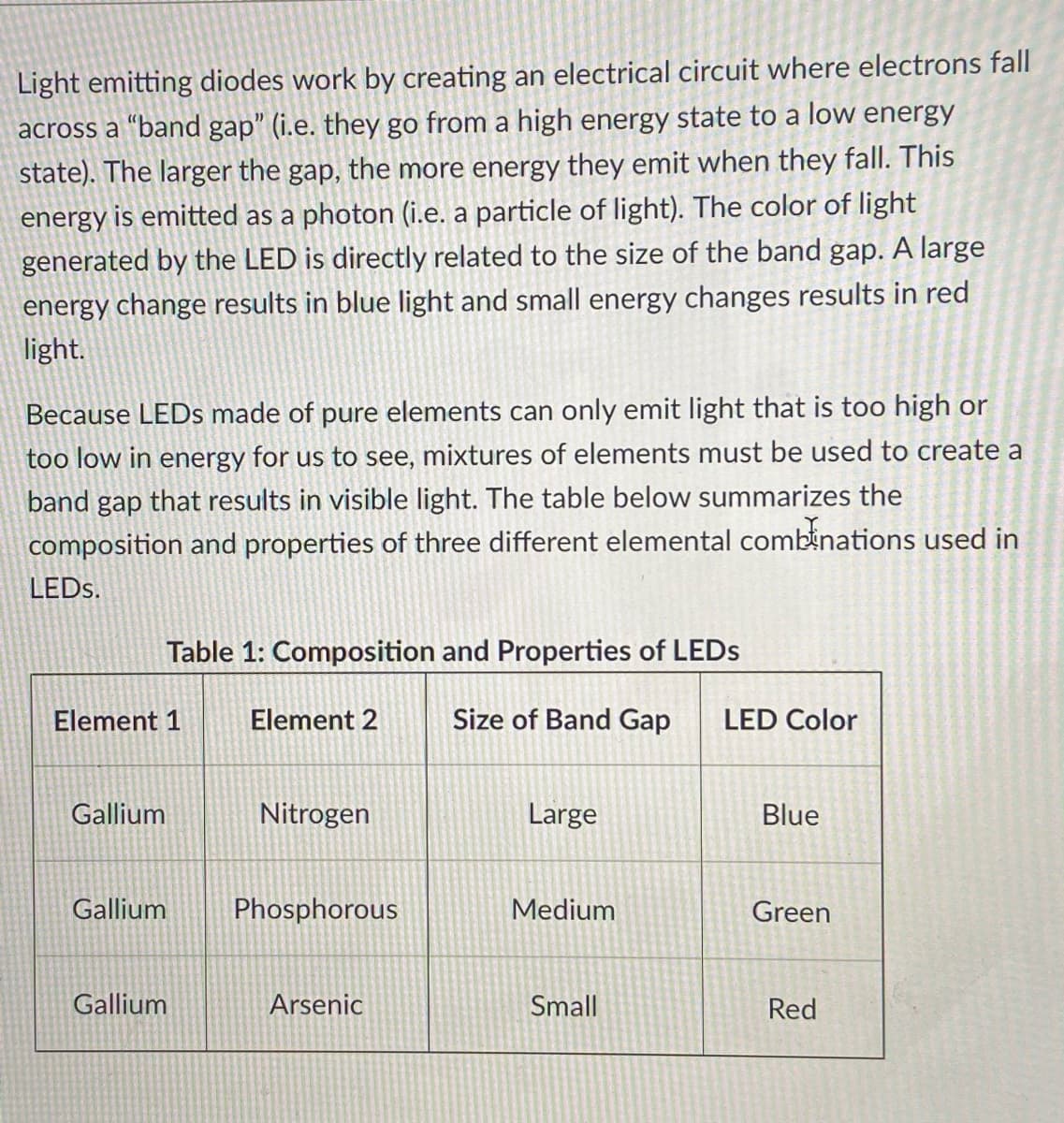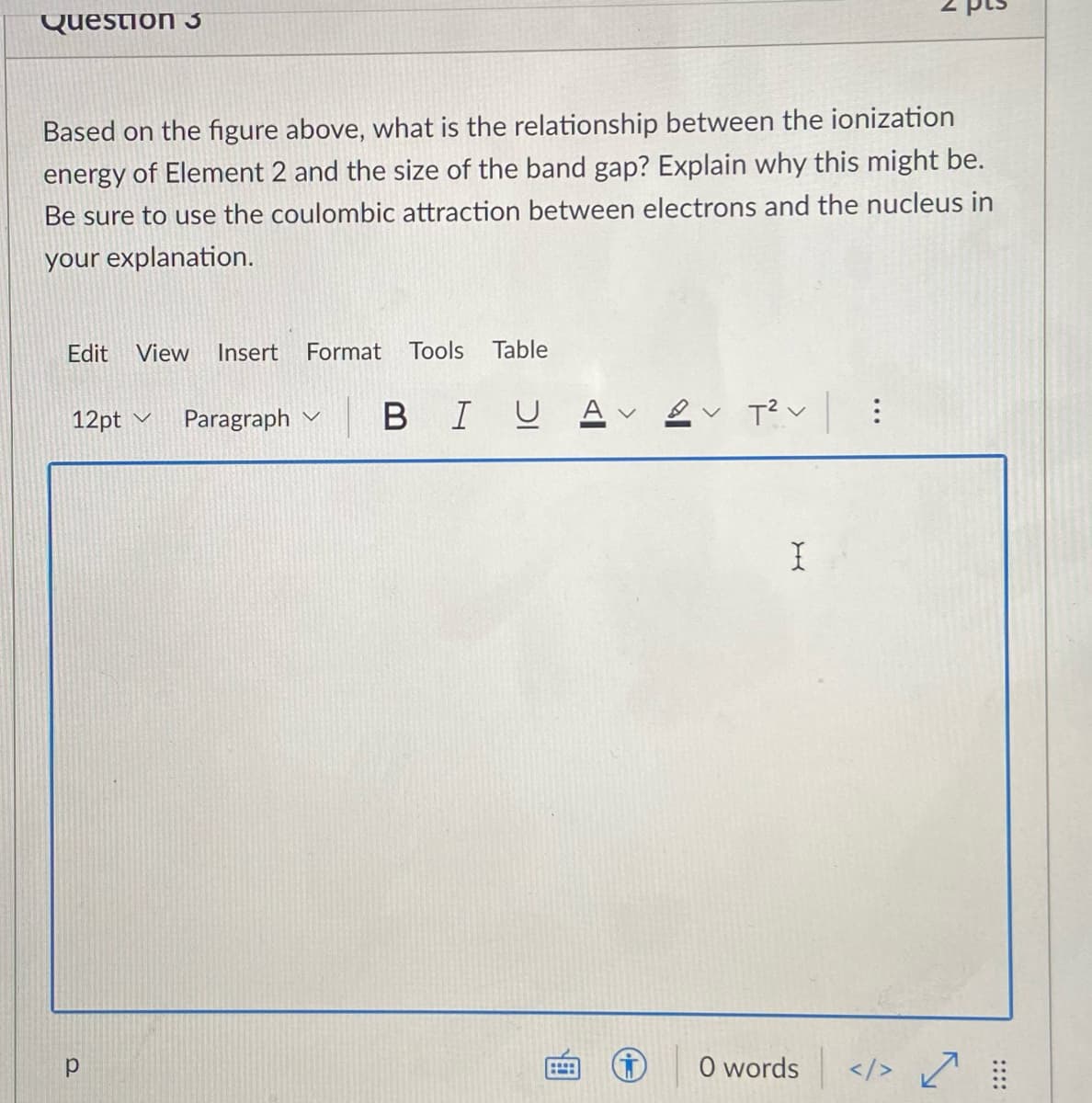Based on the figure above, what is the relationship between the ionization energy of Element 2 and the size of the band gap? Explain why this might be. Be sure to use the coulombic attraction between electrons and the nucleus in your explanation. Edit View Insert Format Tools Table 12pt v Paragraph v BIUAv ev T?v :
Based on the figure above, what is the relationship between the ionization energy of Element 2 and the size of the band gap? Explain why this might be. Be sure to use the coulombic attraction between electrons and the nucleus in your explanation. Edit View Insert Format Tools Table 12pt v Paragraph v BIUAv ev T?v :
Biomedical Instrumentation Systems
1st Edition
ISBN:9781133478294
Author:Chatterjee
Publisher:Chatterjee
Chapter6: Biomedical Electrodes, Sensors, And Transducers
Section: Chapter Questions
Problem 9P
Related questions
Question

Transcribed Image Text:Light emitting diodes work by creating an electrical circuit where electrons fall
across a “band gap" (i.e. they go from a high energy state to a low energy
state). The larger the gap, the more energy they emit when they fall. This
energy is emitted as a photon (i.e. a particle of light). The color of light
generated by the LED is directly related to the size of the band gap. A large
energy change results in blue light and small energy changes results in red
light.
Because LEDS made of pure elements can only emit light that is too high or
too low in energy for us to see, mixtures of elements must be used to create a
band gap that results in visible light. The table below summarizes the
composition and properties of three different elemental combinations used in
LEDS.
Table 1: Composition and Properties of LEDS
Element 1
Element 2
Size of Band Gap
LED Color
Gallium
Nitrogen
Large
Blue
Gallium
Phosphorous
Medium
Green
Gallium
Arsenic
Small
Red

Transcribed Image Text:Question 3
Based on the figure above, what is the relationship between the ionization
energy of Element 2 and the size of the band gap? Explain why this might be.
Be sure to use the coulombic attraction between electrons and the nucleus in
your explanation.
Edit
View
Insert
Format Tools
Table
12pt v
Paragraph v
BIUA
O words
</> ?
::::
Expert Solution
This question has been solved!
Explore an expertly crafted, step-by-step solution for a thorough understanding of key concepts.
Step by step
Solved in 2 steps

Recommended textbooks for you

